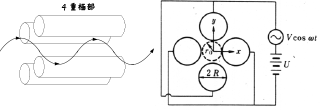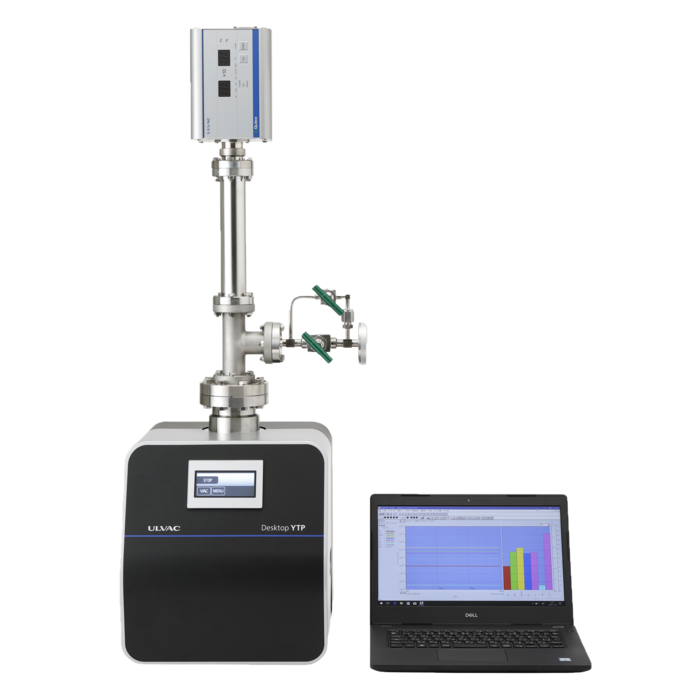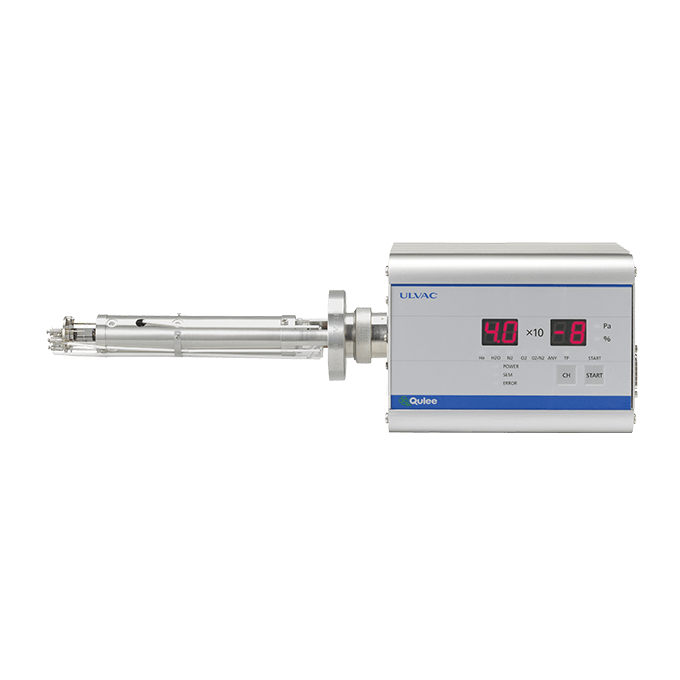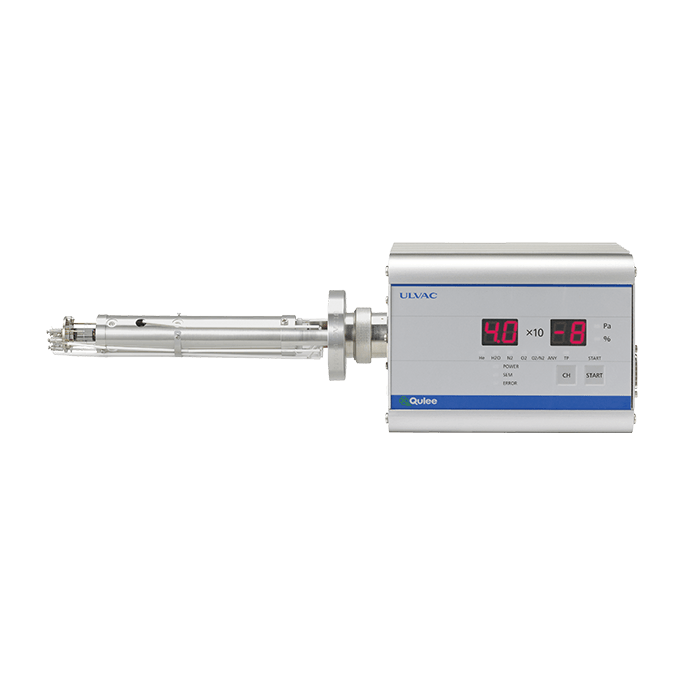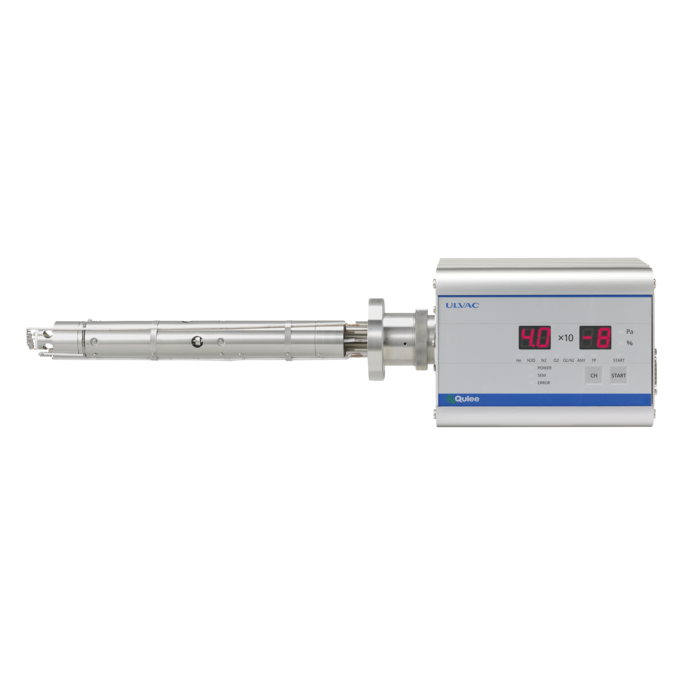ULVAC's residual gas analyzers (process gas monitor) have a wide range of models, from high-end models with high-performance and high-resolution that is suitable for the most advanced research and development in space and nuclear power, to basic types that is suitable for general applications.
It is simple and easy to use and meets all the needs, such as vacuum process management.
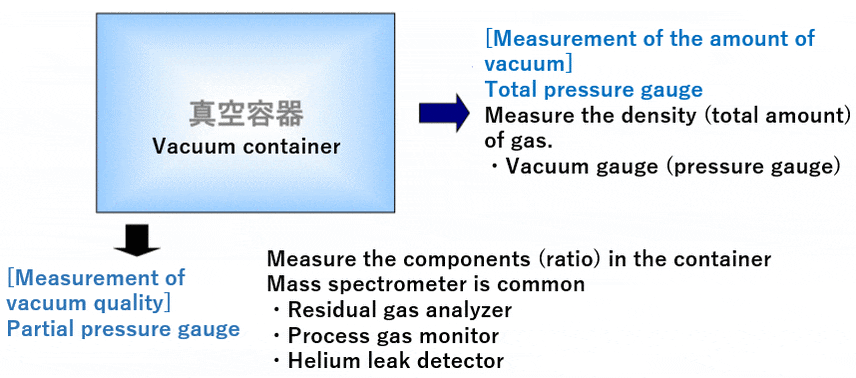
Configuration of process gas monitor
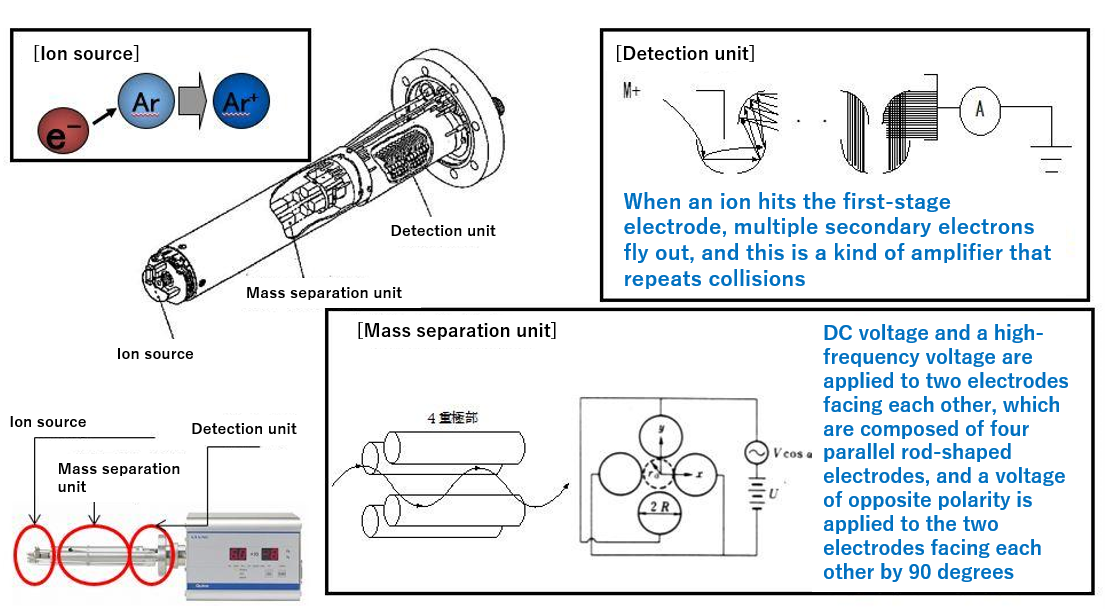
|
a.Ion Source
The ion source emits thermal electrons e- from the filament. The thermal electrons are distributed around the grid electrode. Gas molecules that collide with the thermal electrons are ionized. The produced ions enter into the Q-pole and are separated by the mass number. |
b.Mass Separation Part.
The mass separation part consists of four parallel rod-shaped electrodes. |
|
c.Detection Part
When Ion hits an electrode at the first stage, multiple secondary electrons are emitted, and the collisions repeat. It is a type of Amplifier. |


